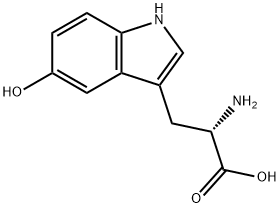N-EPSILON-ACETYL-L-LYSINE
- CAS NO.:692-04-6
- Empirical Formula: C8H16N2O3
- Molecular Weight: 188.22
- MDL number: MFCD00002639
- EINECS: 211-725-9
- SAFETY DATA SHEET (SDS)
- Update Date: 2024-11-19 23:02:33

What is N-EPSILON-ACETYL-L-LYSINE?
Description
Acetyllysine (or acetylated lysine) is an acetyl-derivative of the amino acid lysine. There are multiple forms of acetyllysine - this article refers to N-ε-acetyl-L-lysine. The other form is N-α-acetyl-Llysine.
In proteins, the acetylation of lysine residues is an important mechanism of epigenetics. It functions by regulating the binding of histones to DNA in nucleosomes and thereby controlling the expression of genes on that DNA. Non-histone proteins are acetylated as well. Unlike the functionally similar methyllysine, acetyllysine does not carry a positive charge on its side chain.
Histone acetyltransferases (HATs) catalyze the addition of acetyl groups from acetyl-CoA onto certain lysine residues of histones and non-histone proteins. Histone deacetylases (HDACs) catalyze the removal of acetyl groups from acetylated lysines.
Acetyllysine can be synthesized from lysine by the selective acetylation of the terminal amine group.
Chemical properties
white crystalline powder
The Uses of N-EPSILON-ACETYL-L-LYSINE
N-Epsilon-acetyl-l-lysine is used in the metabolomics study on the combined effect of cocaine and ethanol via liquid chromatography-mass spectrometry metabolomics approach.
What are the applications of Application
Nepsilon-Acetyl-L-lysine is an amino acid derivative with an acetyl group at the ε nitrogen
Definition
ChEBI: An N6-acyl-L-lysine where the N6-acyl group is specified as acetyl.
Biochem/physiol Actions
Nε-Acetyl-L-lysine (L-AcK) is an R-chain N-acetylated α amino acid used together with other lysine analogues to differentiate and characterized various aminoacylases and regulator 2 (Sir2) enzymes/sirtuins.
Properties of N-EPSILON-ACETYL-L-LYSINE
| Melting point: | 250 °C (dec.)(lit.) |
| Boiling point: | 323.23°C (rough estimate) |
| Density | 1.1793 (rough estimate) |
| refractive index | 1.4500 (estimate) |
| storage temp. | -20°C |
| solubility | Aqueous Base (Slightly), Water (Slightly) |
| pka | 2.53±0.24(Predicted) |
| form | Powder |
| color | White |
| Water Solubility | Soluble in water (miscible), and 80% acetic acid (50 mg/ml). |
| Sensitive | Hygroscopic |
| CAS DataBase Reference | 692-04-6(CAS DataBase Reference) |
Safety information for N-EPSILON-ACETYL-L-LYSINE
| Signal word | Warning |
| Pictogram(s) |
 Exclamation Mark Irritant GHS07 |
| GHS Hazard Statements |
H315:Skin corrosion/irritation H319:Serious eye damage/eye irritation H335:Specific target organ toxicity, single exposure;Respiratory tract irritation |
| Precautionary Statement Codes |
P261:Avoid breathing dust/fume/gas/mist/vapours/spray. P280:Wear protective gloves/protective clothing/eye protection/face protection. |
Computed Descriptors for N-EPSILON-ACETYL-L-LYSINE
| InChIKey | DTERQYGMUDWYAZ-ZETCQYMHSA-N |
N-EPSILON-ACETYL-L-LYSINE manufacturer
Khagga Life Sciences
New Products
(S)-3-Aminobutanenitrile hydrochloride 4-Methylphenylacetic acid N-Boc-D-alaninol N-BOC-D/L-ALANINOL Tert-butyl bis(2-chloroethyl)carbamate N-octanoyl benzotriazole 3-Morpholino-1-(4-nitrophenyl)-5,6-dihydropyridin- 2(1H)-one Furan-2,5-Dicarboxylic Acid S-2-CHLORO PROPIONIC ACID ETHYL ISOCYANOACETATE 2-Bromo-1,3-Bis(Dimethylamino)Trimethinium Hexafluorophosphate 4-IODO BENZOIC ACID 3-NITRO-2-METHYL ANILINE 1-(2,4-DICHLOROPHENYL) ETHANAMINE (2-Hydroxyphenyl)acetonitrile 4-Bromopyrazole 5,6-Dimethoxyindanone 2-(Cyanocyclohexyl)acetic acid 4-methoxy-3,5-dinitropyridine 1-(4-(aminomethyl)benzyl)urea hydrochloride 2-aminopropyl benzoate hydrochloride diethyl 2-(2-((tertbutoxycarbonyl)amino) ethyl)malonate tert-butyl 4- (ureidomethyl)benzylcarbamate Ethyl-2-chloro((4-methoxyphenyl)hydrazono)acetateRelated products of tetrahydrofuran








You may like
-
 692-04-6 Nepsilon-Acetyl-L-lysine 98%View Details
692-04-6 Nepsilon-Acetyl-L-lysine 98%View Details
692-04-6 -
 Nε-Acetyl-L-lysine CAS 692-04-6View Details
Nε-Acetyl-L-lysine CAS 692-04-6View Details
692-04-6 -
 N-Epsilon-acetyl-l-lysine 95% CAS 692-04-6View Details
N-Epsilon-acetyl-l-lysine 95% CAS 692-04-6View Details
692-04-6 -
 Nε-Acetyl-L-lysine CAS 692-04-6View Details
Nε-Acetyl-L-lysine CAS 692-04-6View Details
692-04-6 -
 1975-50-4 98%View Details
1975-50-4 98%View Details
1975-50-4 -
 2-HYDROXY BENZYL ALCOHOL 98%View Details
2-HYDROXY BENZYL ALCOHOL 98%View Details
90-01-7 -
 14714-50-2 (2-Hydroxyphenyl)acetonitrile 98+View Details
14714-50-2 (2-Hydroxyphenyl)acetonitrile 98+View Details
14714-50-2 -
 118753-70-1 98+View Details
118753-70-1 98+View Details
118753-70-1